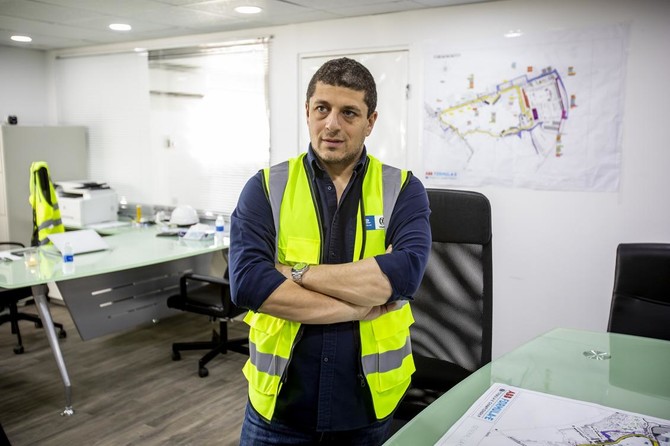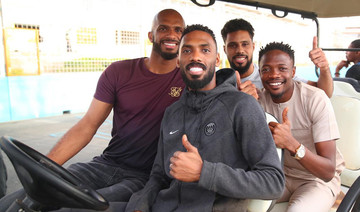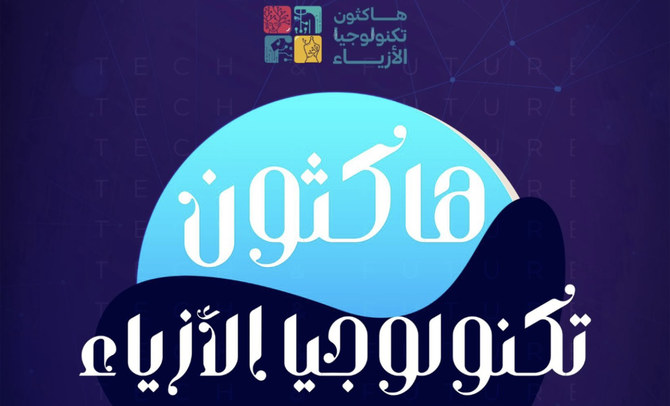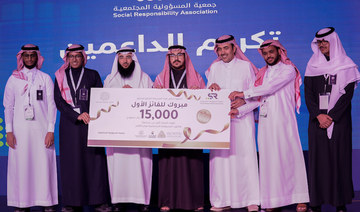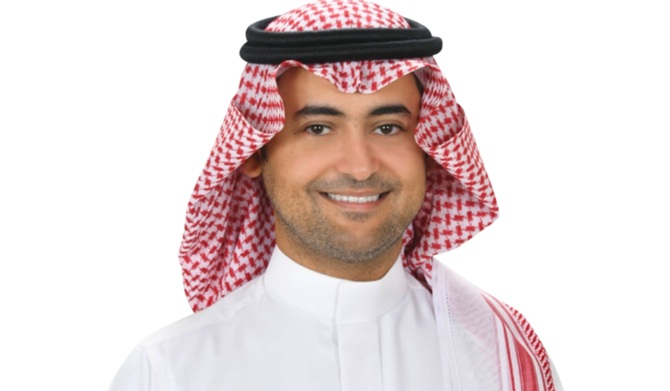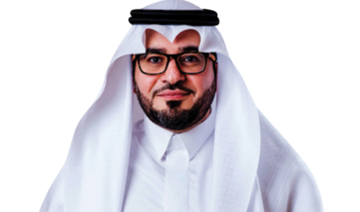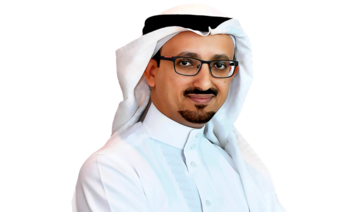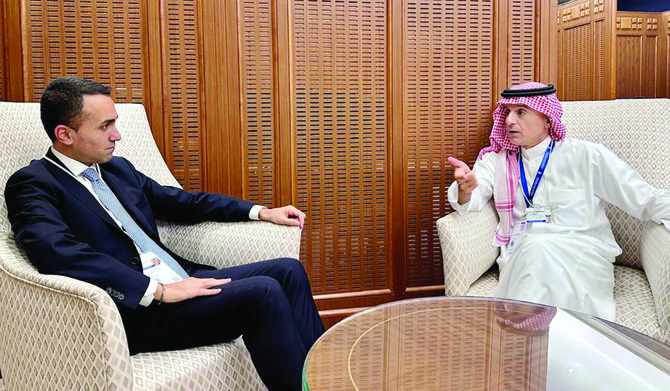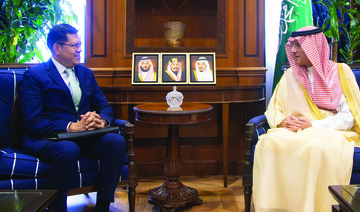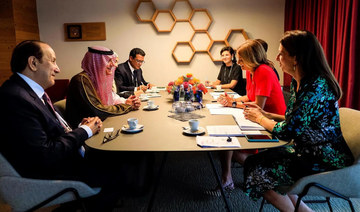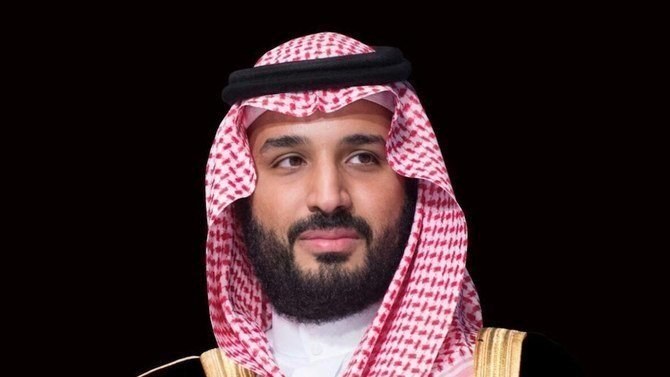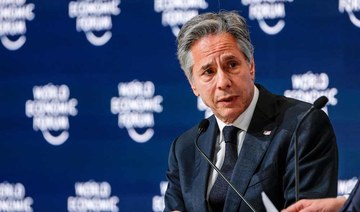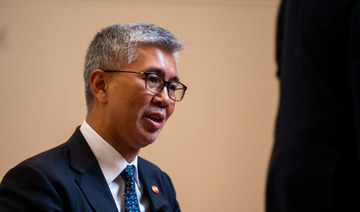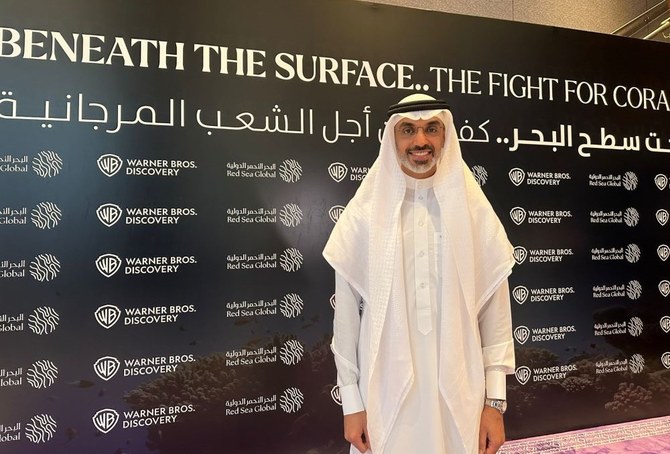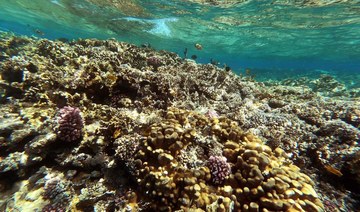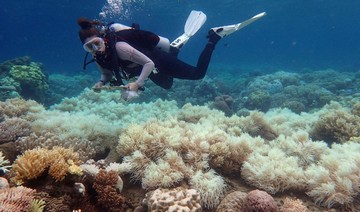RIYADH: When the lights go green in Ad Diriyah, Saudi Arabia, Formula E drivers will begin their high-speed sprint to the finish line on a brand-new track in front of a roaring crowd.
But what the thousands of spectators won’t see is the challenge of a lifetime faced by those creating the electric street racing circuit in the heart of a protected UNESCO city that is hundreds of years old.
Samer Issa-El-Khoury Managing Partner at CBX, took responsibility for delivering the venue and preserving Ad Diriyah – taking on a race against time to have the facility completed to host its first event – this is his story.
Q: What did you think when they first said ‘let’s build the track in Ad Diriyah’, a UNESCO heritage site?
When they told us that we are coming to look for a race track in Ad Diriyah, personally I said it’s impossible. We were talking about a world heritage site, the oldest city in Saudi Arabia where the Kingdom was founded.
But once we decided, with Formula E and GSA, to bring the race to Saudi Arabia we were looking for an appropriate location to have a track that fits the sport’s specifications. These were mainly the width of the roads and the length of the track to meet the criteria for safety laid down by the sport’s world governing body, the FIA.
A big team from Formula E, GSA, CBX and SAMF scouted several locations around Ad Diriyah and we finally came up with this, the best location, because we were able to do the civil work required to widen the streets while having the restrictions of the building around it in a UNESCO world heritage site.
We then spent two to three months doing engineering studies, checking how to widen the roads and how to make it challenging with enough turns.
Q: Any construction project comes with significant challenges, but how did you approach protecting the archaeological integrity in Ad Diriyah while getting the site fit for Formula E racing?
We did not touch on the restricted area of UNESCO but we had streets which were the old city boundaries, where you can see the old stone walls and we made sure they were protected and preserved. I felt a personal responsibility for this.
This took months of planning and so much coordination with so many stakeholders to ensure compliance, from Riyadh Development Authority to Diriyah Gate Development Authority, the municipality, the governor’s office, the Ministry of Culture and the Ministry of Tourism.
Even the infrastructure works below the roads, whether by the telecommunications companies, the water company, the electric company, we made sure preservation was at the heart of our work.

Q: Your company CBX has tackled some major projects in its time, but how does this compare?
This is one of the most challenging projects CBX has taken on. That is because of the timeframe we had, firstly the race was supposed to be held in 2019, it was not supposed to be in 2018. So that made it very challenging, but we made it.
We only started construction in September, so we had three months to do what usually requires six to eights months. That meant that we had thousands of machines on site for the construction and up to 3,000 people onsite throughout the last three months.
The track was the most obvious aspect of course but also we had to prepare parking of 300,000 sq m, we had to prepare the E Village, which is almost 180,000 sq m when usually the eVillage is 20,000 sq m. We want to give the whole population of Saudi Arabia something huge. This is a big event coming here and we wanted the supporting E Village to be as big.
We also had to find the space to put the paddock, the Emotion Club, the Royal Box, the grandstands, in a city that is hundreds of years old and the space is very limited.
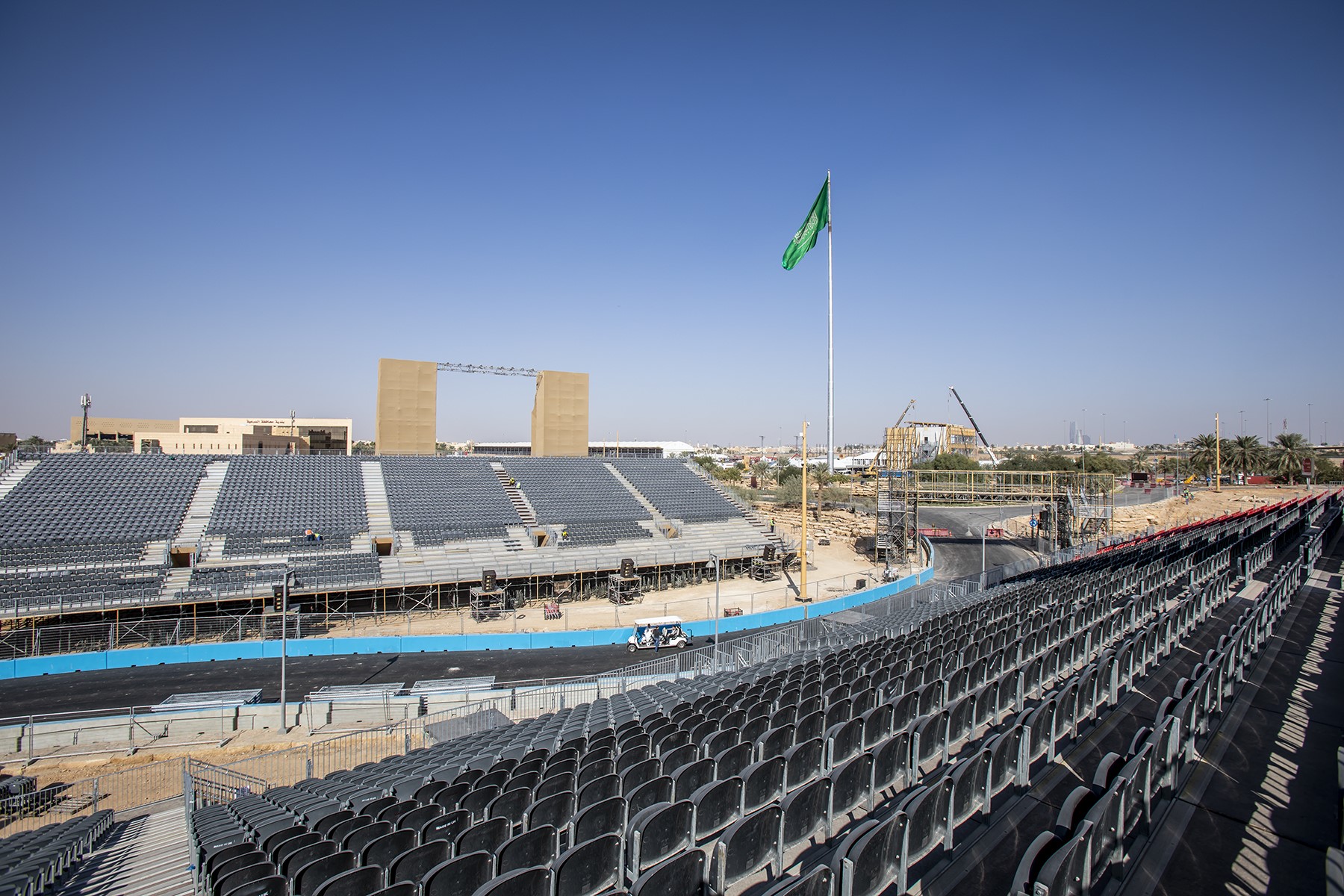
Q: Talk us through your creation? What will fans and drivers make of the track?
When we unveiled the circuit layout the response worldwide was incredible. Really positive, and people are excited to see the cars going through 21 turns each lap. What is very challenging for the drivers is that some of the turns are ascending, some of them are descending, so not only do you have a slope, but you have a slope and a corner, one second you are going down the next going up.
This will show the drivers’ prowess and technical ability to cope with those turns because it is so easy to make a mistake, to lose speed if you take it a little bit wrong.
Also, at the end of turn 17 you have one of the longest straights, with the new Attack Zone that has been introduced. I think it’s going to be as interesting to see how this attack zone will happen, and whatever they gain on that, they might lose it on the turns.
All this makes the 2018 ‘Saudia’ Ad Diriyah E-Prix more of a drivers’ race than a car or teams’ race.
How do you think people will react when they see what’s been achieved here?
If they’ve been to Formula E, and they’ve been to any of the previous 45 races, what they are going to see built in Saudi Arabia is so much different from what they’ve seen elsewhere. This is really something the GSA wanted to offer to Formula E the chance to feel at home in Saudi Arabia. Especially as the race will be here for at least 10 years.
Everything we are creating, such as the parking, is not just for Formula E, this is in the big masterplan for Ad Diriyah that will be used for the visitors who will be coming during the year.
The conservation of the past is a major element in the project. Formula E is hereto blend in with the heritage and enhance it by bringing electric racing and clean power to Ad Diriyah. It really is the future meeting the past.
Q. What are you most looking forward to on race day?
Once we race starts and ‘We go green in Ad Diriyah’, I’m looking forward to hearing that, especially as it has a double meaning, the green light is on and we go green embracing sustainability with Formula E, I think this will be a new era for this stunning UNESCO heritage site.
The beauty of this Formula E race in Saudi Arabia that is so different to anywhere else I’ve been. I’ve been to every single race in the world and the big difference here is that the whole Saudi government, and all the entities within it, are working as one team. Whether it’s the General Entertainment Authority, the Ministry of Tourism, the Ministry of Foreign Affairs, this Ministry of Interior, the Ministry of Culture, the General Sports Authority, every single entity is working hand in hand to make this project a success.
You have tourism, you have culture, you have food and beverages and fine dining, and you have the online Sharek visa introduced for global visitors which is Saudi Arabia opening up to the world. They are welcoming everyone, and they don’t have to go anywhere to get the visa, it can be done online. They buy their ticket, they get their visa, they print it and bring it to the airport, and they are welcomed to the Kingdom. This is really amazing.
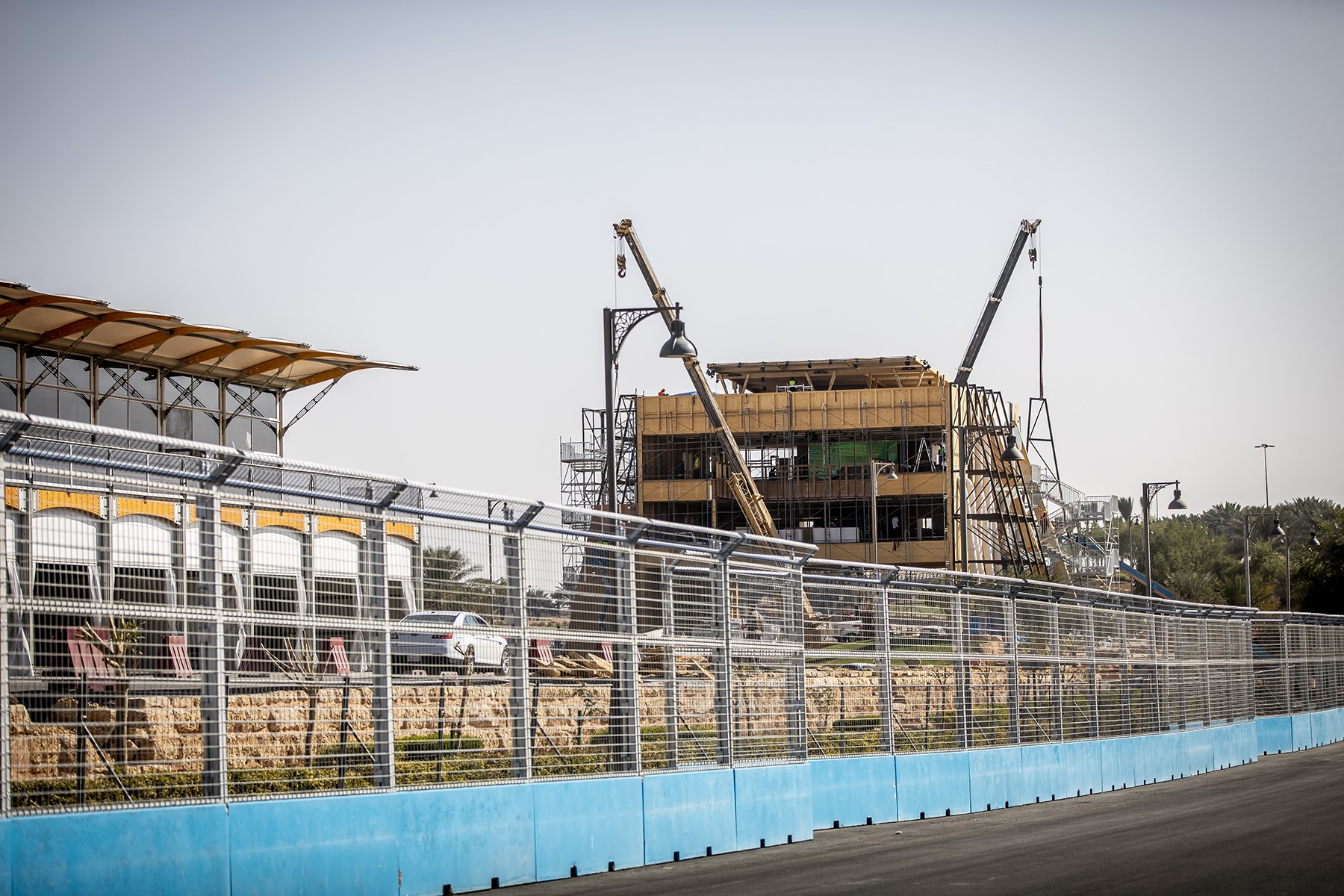
Q. What will you remember most about this project?
I am so proud to be part of this project, this means a lot for CBX and means a lot for Ad Diriyah specifically, and for Saudi Arabia and I’m sure it means a lot for Formula E as well.
So many good memories, so many sleepless nights, so many deadlines to meet. What has been incredible is how so many people came together and worked with a positive mindset, everyone only wanted the success of this event.
We are proud of the effort that CBX put into that process and we’re proud of the effort the young people of the Saudi team who we worked with, how energetic they have been, how this new generation were working more than us. I thought I can work 18 hours without sleep, some of the young Saudis that were part of our team were working 24 hours, really, and it was impressive.
I have been in Saudi Arabia for 15 years, but I have never seen this level of commitment. I’ve been involved in some of the biggest infrastructure projects in Saudi Arabia, and in the world, and I’ve never seen this energy specifically within the Saudi young people I’m working with.
I think this project really is Vision 2030, you can see the diversification from oil going toward the clean energy, you can see how involved the young generation is, you can see how dedicated the government is to be opening up to the world with the online visa system.
From all sides this is Vision 2030, when I look at the track, when I look at this event, I see the future.


